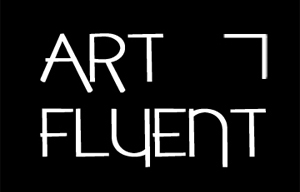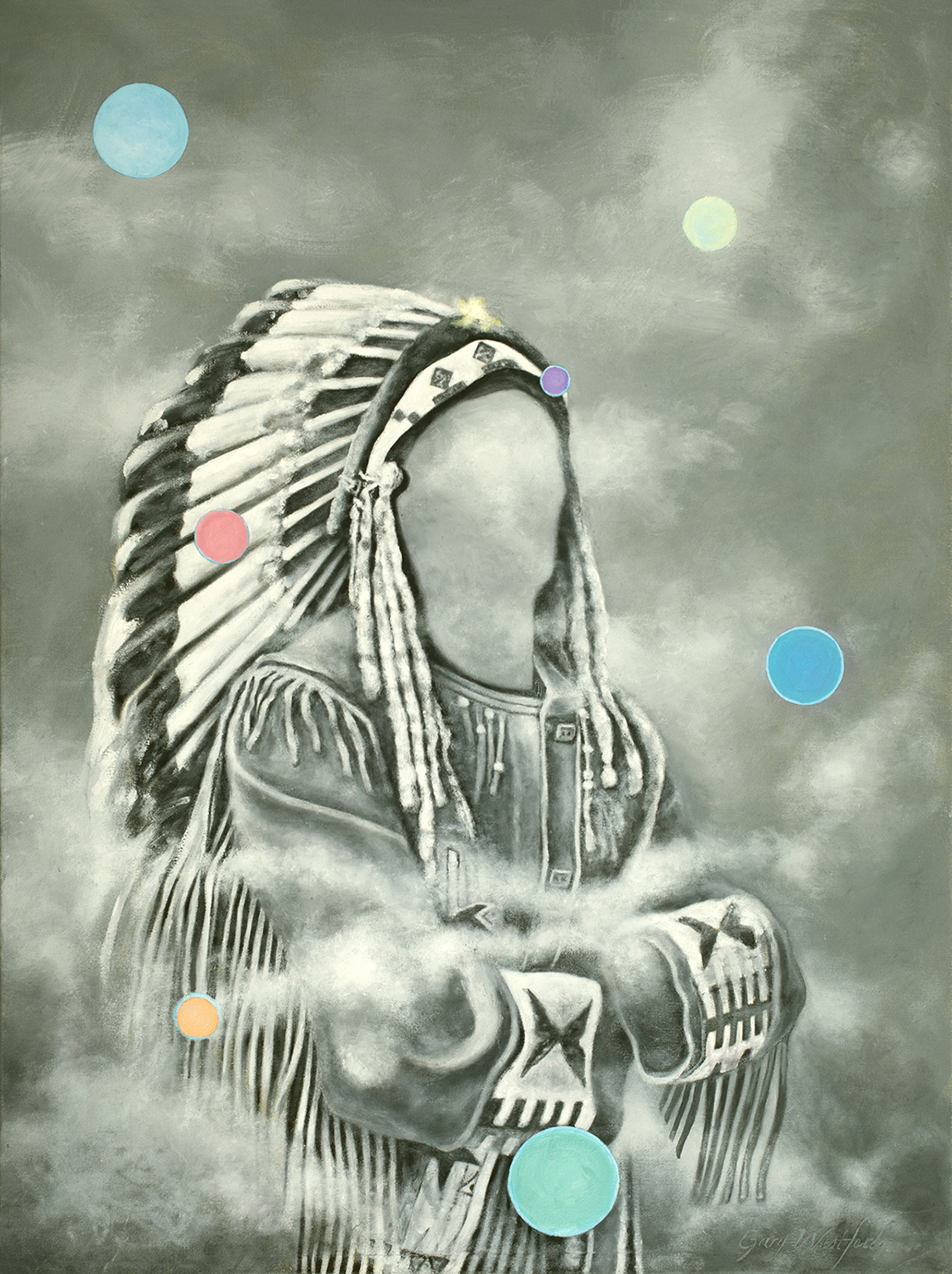
Witness: Chief Kiutus Tecumseh under two moons, Snoqualmie Tribe (c. 1843-1929), oil on canvas, 40 x 30 inches
-Gary, we'd love to hear your story and how you got to where you are today, both personally and as an artist.
I grew up in the San Francisco Bay Area during a relatively idyllic period in American history. When I was nine years old, one of my drawings of dinosaurs was published in the Sunday Oakland Tribune’s children’s art section. I remember that as I made the drawing, I was thinking about the reasons why these powerful and magnificent creatures became extinct. Years later, in 1968, I moved to San Francisco to attend SF State on a college wrestling scholarship. It was a transformational period in United States history, with many people voicing concerns about an end to war, struggles for civil rights, women’s and gay rights, and the birth of modern concerns about our earth’s environment. The “Earth Day Movement” was initiated in 1970. That year, I made a commitment to seriously study art, with the belief that I could use art as a means for constructing a personal vision, and, as an agent for cultural change.
Subsequently, I studied with noted Bay Area Visionary artists Gerald Gooch and Robert Moon, whose styles were distinctly surreal. I later received a Masters’ degree from U.C. Berkeley, where I studied with Bay Area Figurative painters Elmer Bischoff, Joan Brown, and Robert Colescott. Colescott’s biting social satire paintings of the African American experience resonated with me, and his ideas gave me permission to chart my own path in my work.
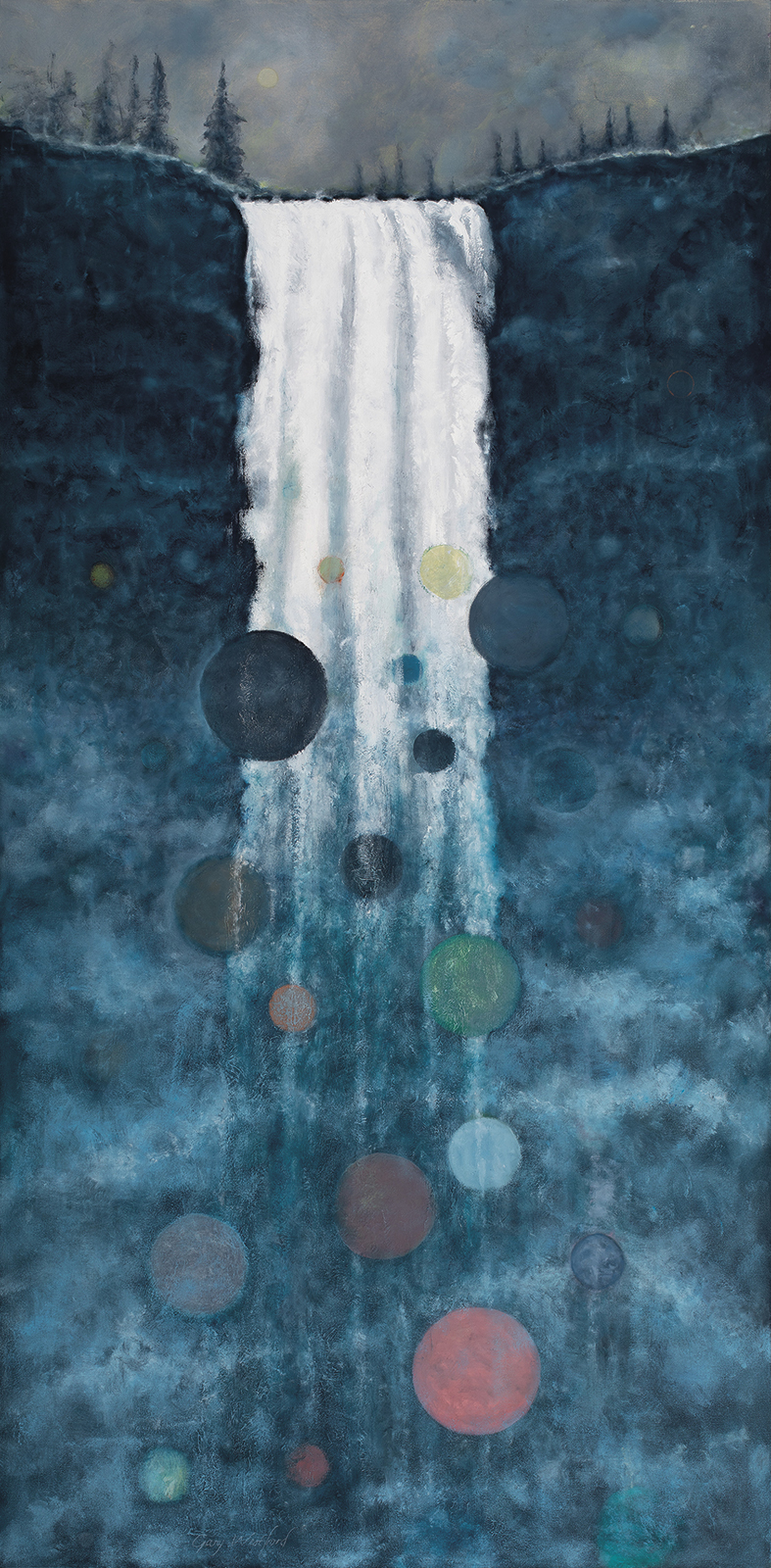
Waterfall (the Source), oil on canvas, 36 x 72 inches
-Do you see your art as activism, a way to document history, an emotional outlet, or something else? How do today’s events play into that?
My paintings represent images of both known and unknown worlds. Paintings of the “known world” (You Are Safe; You Scream I Scream) are products of my observation over time of the events of the day. In that regard, our collective human concerns from fifty years ago have not changed: the need to move humankind forward; to be good stewards of our planet; to end violence and war; and to bear witness to the birth of the next Renaissance.
In other paintings, I make images of the “unknown world” (Waterfall: the Source; Lake: the Source; Witness: Chief Tecumseh ). In these paintings, I am interested in making references to the world of the imagination, where nature can be encountered at its origins. These paintings inhabit a personally spiritual location, where it’s possible to contemplate the miraculous occurrence of life forms (circles, spheres, orbs) emerging from nature.

Lake (the Source) Kohei Nawa deer, oil on canvas, 60 x 72 inches
-The orbs hold a quiet yet powerful presence in your work. What do they symbolize for you?
Initially, I began to present circles in my paintings that served as an abstract screen floating in front of the realistically painted images behind them. The circles were color coded, so for example, in the You Scream I Scream painting, the seven red circles represent associations with violence, blood and passion, and the seven deadly sins. In later paintings (Icarus, You Are Safe), the circles were coded to represent the “colors” of human flesh (red, white, brown, black, yellow). Over time, the circles became more colorfully transparent and ethereal, and they began to defy gravity (Waterfall: the Source; Lake: the Source; Witness: Chief Tecumseh). For me, these spheres represent personal metaphors for the elemental geometries of nature and life itself, and a universe that I view as divine.
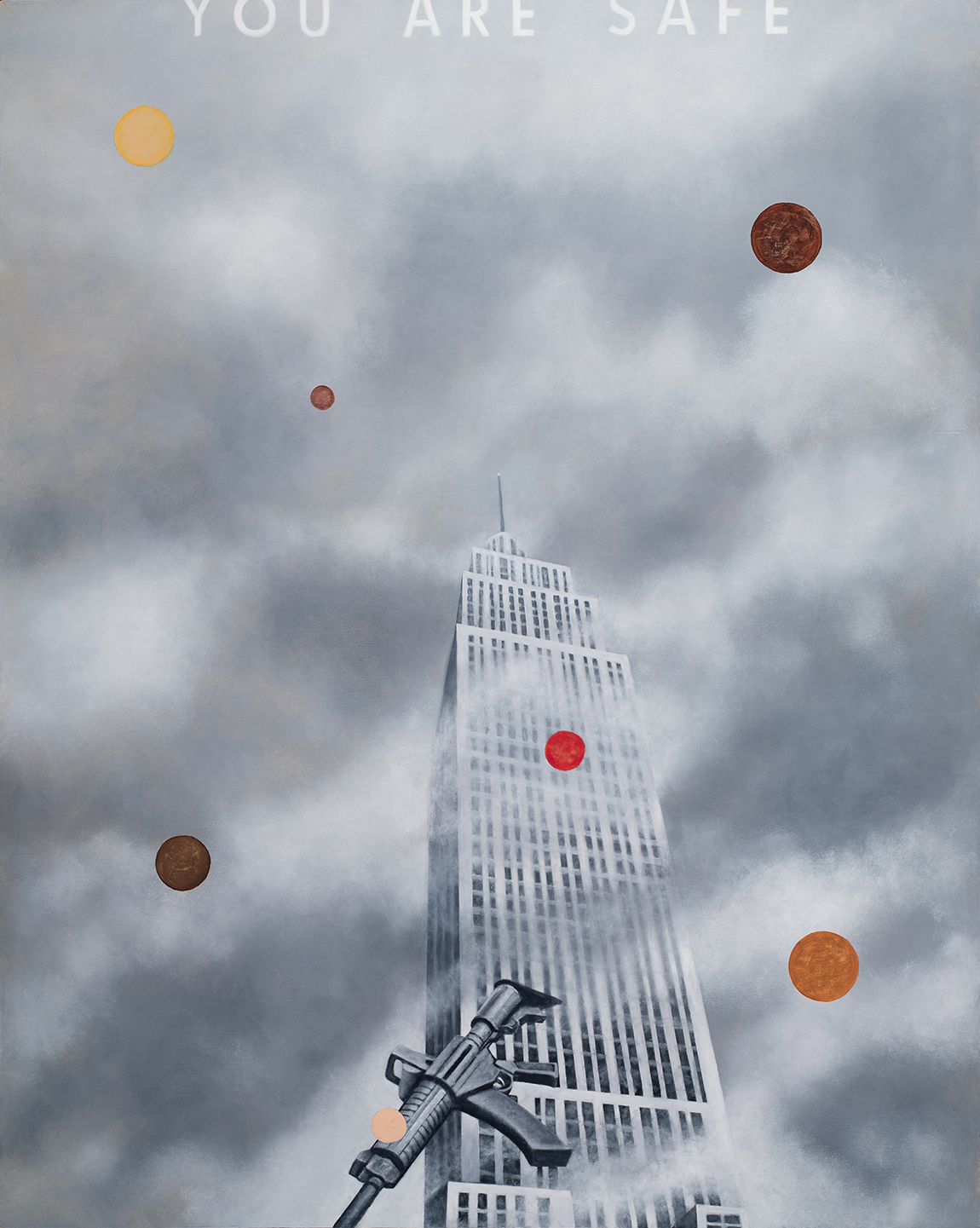
You Are Safe, oil on canvas, 60 x 48 inches
-After two decades of working with incarcerated individuals, has that experience shifted your thoughts on art? Not just as a creative practice, but as a way to connect, heal, or advocate?
From day one, I entered my career teaching art and art history in maximum security prisons in Oregon with the express intention and belief that art serves up the potential for growth, personal development, and change. Great art has the power to inform us and change us. Théodore Géricault’s painting The Raft of the Medusa (1818-19) is proof of that. Géricault addressed a horrific event in French naval history, and as a result, maritime laws were changed. Bringing art and education into prison systems brings light into darkness.
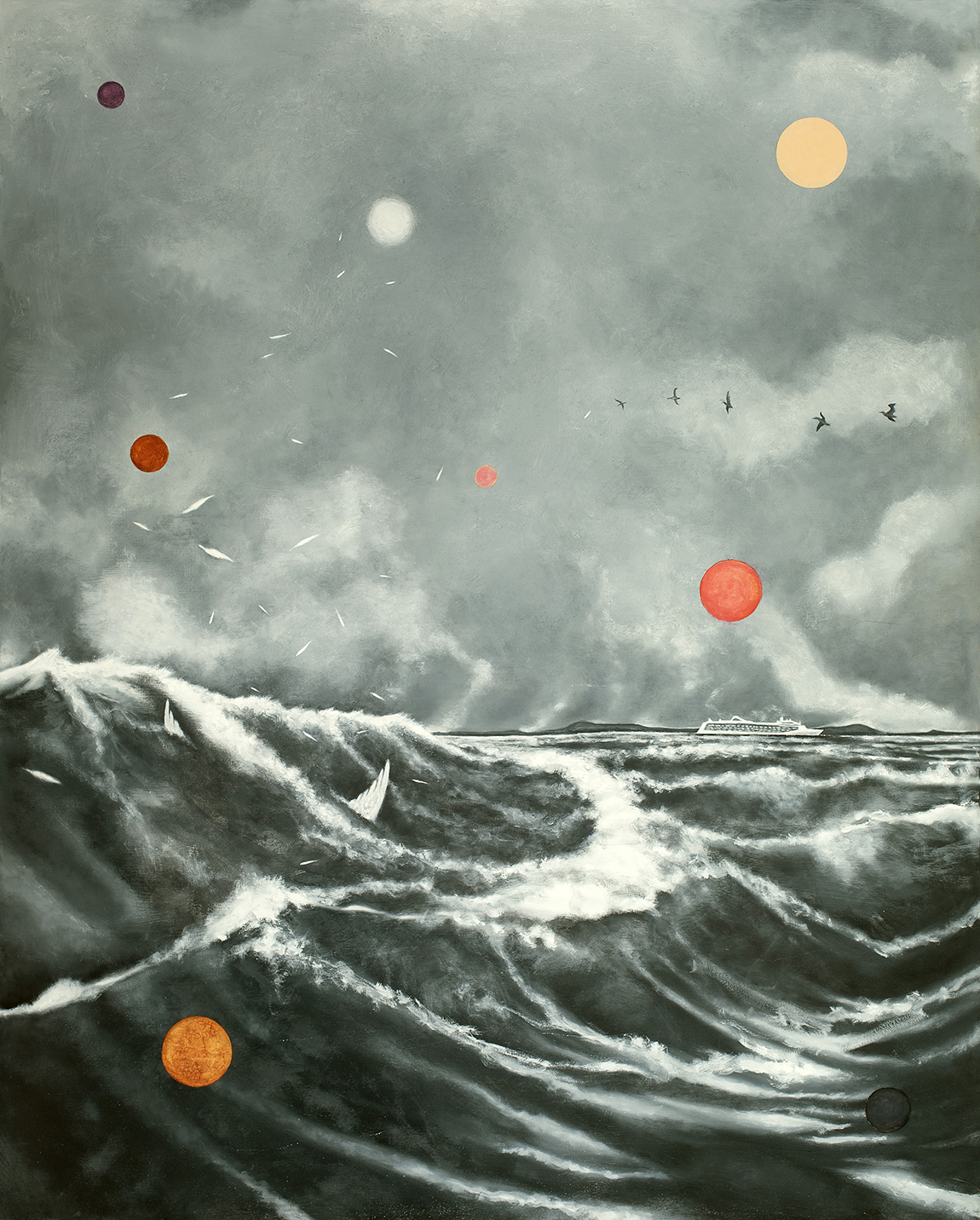
The Fall of Icarus, oil on canvas, 60 x 48 inches
-What's the best way for someone to check out your work and provide support?
For more information and inquiries about my work, please consult my website: garywestford.com
Statement
As a painter, I work conceptually and thematically, constructing narratives in the style of a film maker. My paintings evolve slowly, sometimes over a period of years, always with the goal of moving the painting forward to achieve my concerns technically, and image wise. Nature (clouds, water, and landscape) are recurring subjects. I frequently use surreal juxtaposition, in the spirit of René Magritte’s “object lessons.” Earlier paintings were primarily monochromatic, in the style of a Film Noir movie. Simply stated, in this current body of work, my intention is to move back and forth between the known and unknown world. It’s fair to say that I offer no solutions, but my paintings do pose questions.
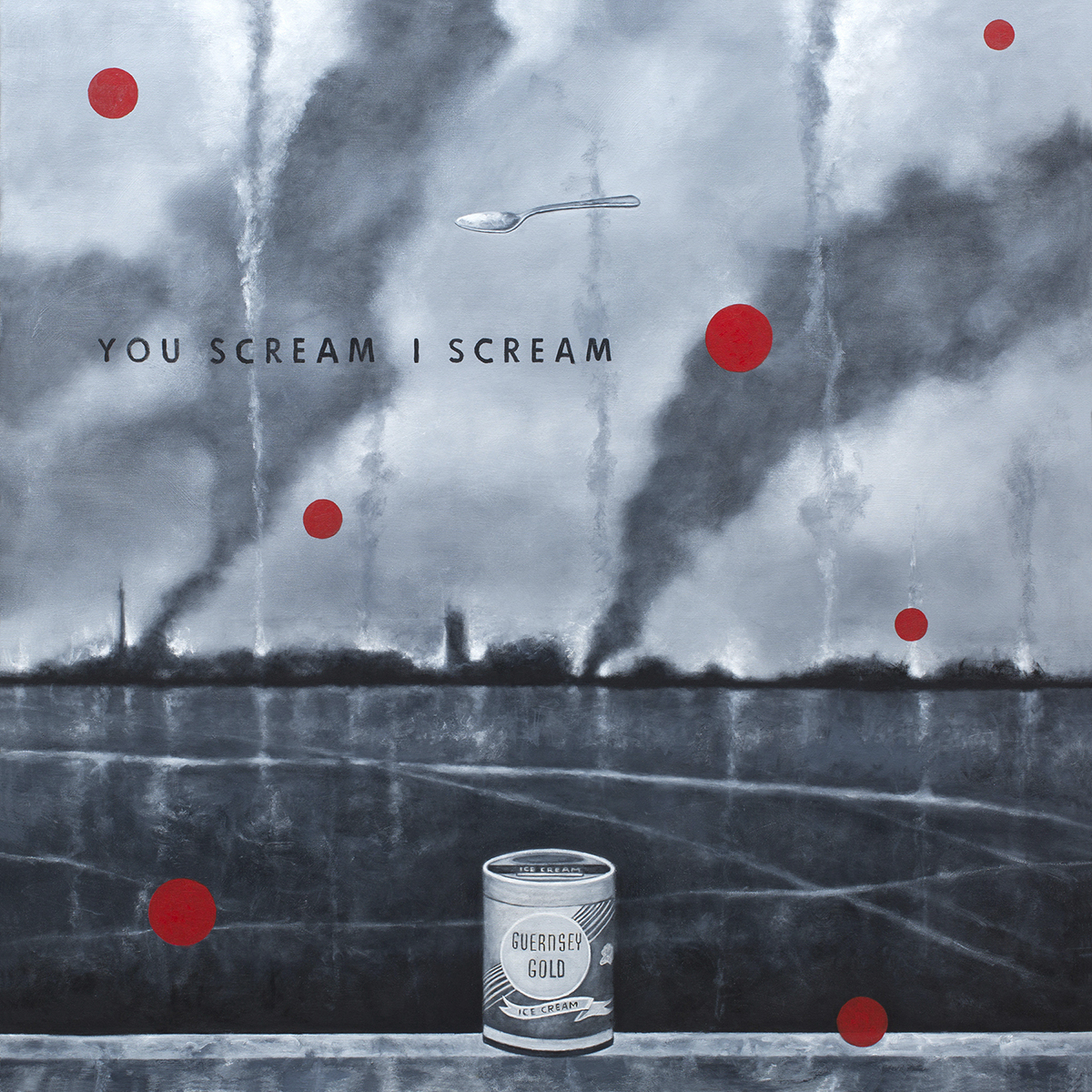
You Scream I Scream, oil on canvas, 60 x 60 inches
Collection of the Hallie Ford Museum of Art, Salem, Oregon
Bio
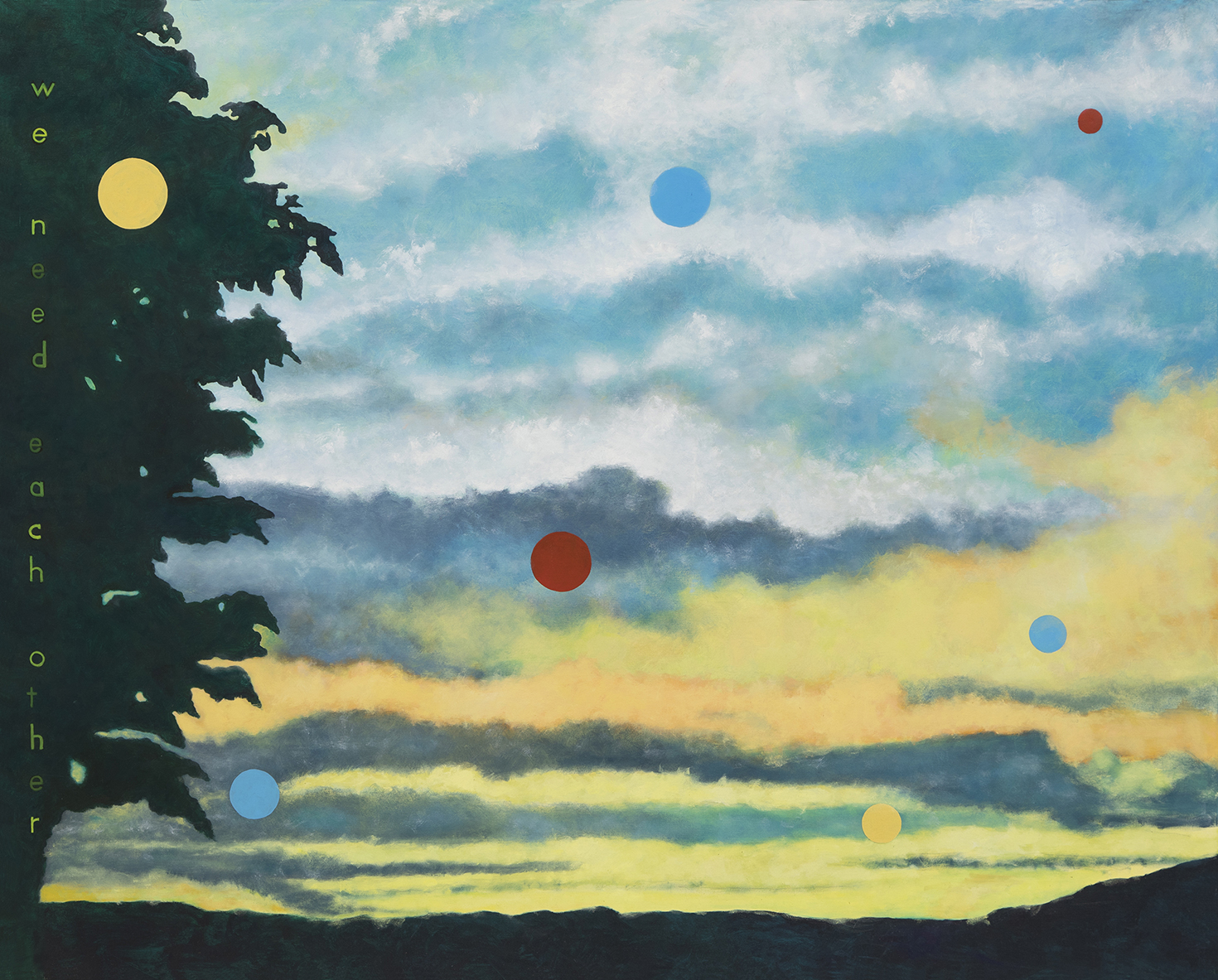
Landscape: We Need Each Other, oil on canvas, 48 x 60 inches
Gary Westford is a representational and narrative painter/conceptual artist whose work focuses on views of an American “landscape” which addresses concerns about the environment, social equity, and amendment rights. His work uses surreal juxtapositions designed to promote a “shock of recognition.” He often combines paintings with found-object items and architectural building materials to create site-specific environments. Westford’s paintings depict images of the landscape, sky and cloud formations, bodies of water, and vehicles of transportation (1940s-50s automobiles, aircraft, boats) along with three-dimensional found architectural items such as vintage screen doors, prayer stands, and classical wooden columns.
He was born in Oakland, California, and grew up in the San Francisco Bay Area. He attended the University of California, Berkeley, where he studied with Bay Area Figurative painters Elmer Bischoff and Joan Brown. While at Berkeley, he also studied with and was influenced by the work of Robert Colescott whose biting social satire paintings of the African American experience resonated with him. Westford moved to Oregon in the late 1970s and began a long career as an arts educator committed to social justice and change. He worked for twenty-three years in juvenile and adult prison systems in
California and Oregon. In 1991, he was the recipient of a national teaching award in corrections education for his work using art within prison systems to promote growth and social change for inmates.
Since 2020, Westford’s paintings have been included in over forty juried exhibitions in California, Oregon, Arizona, Massachusetts, Florida, New York, and Canada. Recent exhibitions include TREES, Verum Ultimum Gallery, Portland, Oregon, 2025; Café & WESTAF’s 50 Artists: A Celebration of the West, 2024; Night Visions, Coconino Center for the Arts, Arizona, 2022; Expressions West 2022, Coos Bay Art Museum, Oregon (Honorable Mention); Humanity, Art Fluent (Director’s Choice Award) 2022; Artworks NW Biennial (Grace Kook Anderson, Portland Art Museum Curator and Juror), 2021.
His recent solo exhibitions include Lifeline (phases of the moon), 2024, Hallie Ford Museum of Art, Salem, Oregon, and Miraculous Occurrences, 2023, Salem Conference Center (Oregon Artists Foundation Series).
